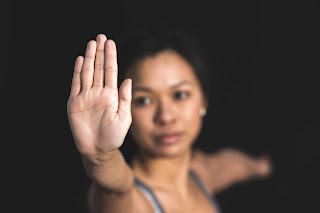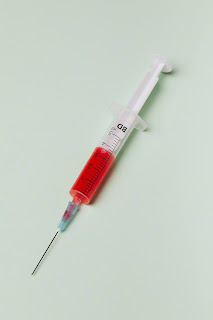Massage Therapy Myths
Massage therapy myths
Although the popularity of massage therapy is on the rise, the misconceptions about what it can and cannot do are still prevalent. Tackling the myths and learning the facts about massage benefits both therapists and their clients.
Here are ten common myths about massage therapy, busted wide open with scientific facts and data.
1. Massages are basically all the same.
Certainly not true! There are many different types of massage, and each has their own role. Spa massage focuses on stress relief and helping to diminish general muscle soreness. Sports massage is useful for athletes of any kind, from Olympians to weekend joggers, and helps to keep muscles and joints in top shape. Massage for physical therapy is geared toward healing specific injuries and keeping bodies mobile while they recover.
2. Massage spreads cancer cells through the body.
This is, scientifically, nearly impossible. One would have to smash the tumor directly for it to shed any potential metastatic material. In fact, most oncologists agree that people undergoing treatment for cancer can greatly benefit from the healing touch of a massage therapist.
This is, scientifically, nearly impossible. One would have to smash the tumor directly for it to shed any potential metastatic material. In fact, most oncologists agree that people undergoing treatment for cancer can greatly benefit from the healing touch of a massage therapist.
3. The effects of a massage are only temporary.
A massage therapist is able to help "retrain" muscles' memory to help reduce pain and stress on a body long after a session is complete. Having a regular massage scheduled can be a great boon to a healthy lifestyle, and can be a lifesaver for those suffering from chronic pain or stiffness.
A massage therapist is able to help "retrain" muscles' memory to help reduce pain and stress on a body long after a session is complete. Having a regular massage scheduled can be a great boon to a healthy lifestyle, and can be a lifesaver for those suffering from chronic pain or stiffness.
4. One should feel sore the day after a massage, or it didn't "work."
Some people may feel a bit sore the day after a massage, especially if it was for deep tissue manipulation, as the muscles are technically getting a workout while being stretched and worked. But not feeling tender the day after is perfectly normal, too, and is not the sign of a failed massage.
Some people may feel a bit sore the day after a massage, especially if it was for deep tissue manipulation, as the muscles are technically getting a workout while being stretched and worked. But not feeling tender the day after is perfectly normal, too, and is not the sign of a failed massage.
5. Pregnant women can miscarry after a massage.
It was once believed that massage would release hormones that could cause early labor, but this is now known not to be true. In fact, a prenatal massage can help mothers-to-be to by reducing their aches and pains, lowering the stress hormones present, and allowing the mother to relax and be pampered.
It was once believed that massage would release hormones that could cause early labor, but this is now known not to be true. In fact, a prenatal massage can help mothers-to-be to by reducing their aches and pains, lowering the stress hormones present, and allowing the mother to relax and be pampered.
6. Massage only moves muscles around.
Not true! Trained massage therapists can help alleviate swollen joints by gently moving stagnant synovial fluid. They can also stretch tightened areas of the fascia, the tissue that connects bones, joints and muscle.
Not true! Trained massage therapists can help alleviate swollen joints by gently moving stagnant synovial fluid. They can also stretch tightened areas of the fascia, the tissue that connects bones, joints and muscle.
7. Do not interrupt a massage therapist, even if what they are doing is hurting.
Definitely not true! It's important to remember that pain isn't "weakness leaving the body," it's actually a response to let someone know that something isn't right. If anything other than a "good hurt" is felt, the massage therapist should know right away. They will not be embarrassed or angry; they will be grateful.
Definitely not true! It's important to remember that pain isn't "weakness leaving the body," it's actually a response to let someone know that something isn't right. If anything other than a "good hurt" is felt, the massage therapist should know right away. They will not be embarrassed or angry; they will be grateful.
8. You must drink water after a massage.
Some massage therapists may disagree with this, but so long as one's kidneys, respiratory and liver functions are normal, the body doesn't need extra help with ridding itself of toxins. However, if you are feeling thirsty after a massage, by all means, drink some water.
Some massage therapists may disagree with this, but so long as one's kidneys, respiratory and liver functions are normal, the body doesn't need extra help with ridding itself of toxins. However, if you are feeling thirsty after a massage, by all means, drink some water.
9. Massage releases toxins and cleanses the body.
There is no medical proof of this, and most doctors agree that it is very unlikely. However, a massage will help to increase blood flow to all parts of a body, which can promote healing to areas affected by injury.
There is no medical proof of this, and most doctors agree that it is very unlikely. However, a massage will help to increase blood flow to all parts of a body, which can promote healing to areas affected by injury.
10. It will get rid of cellulite.
Sorry, but cellulite is just a fact of life. It's simply a sign of subcutaneous fat cells, and is more connected to heredity than anything else. Cellulite is a completely normal part of one's body, and poses no medical issues. On the other hand, helping alleviate post-workout stiffness and pain can help with keeping up a fitness routine, which may reduce the appearance of cellulite over time.
Sorry, but cellulite is just a fact of life. It's simply a sign of subcutaneous fat cells, and is more connected to heredity than anything else. Cellulite is a completely normal part of one's body, and poses no medical issues. On the other hand, helping alleviate post-workout stiffness and pain can help with keeping up a fitness routine, which may reduce the appearance of cellulite over time.




Comments
Post a Comment